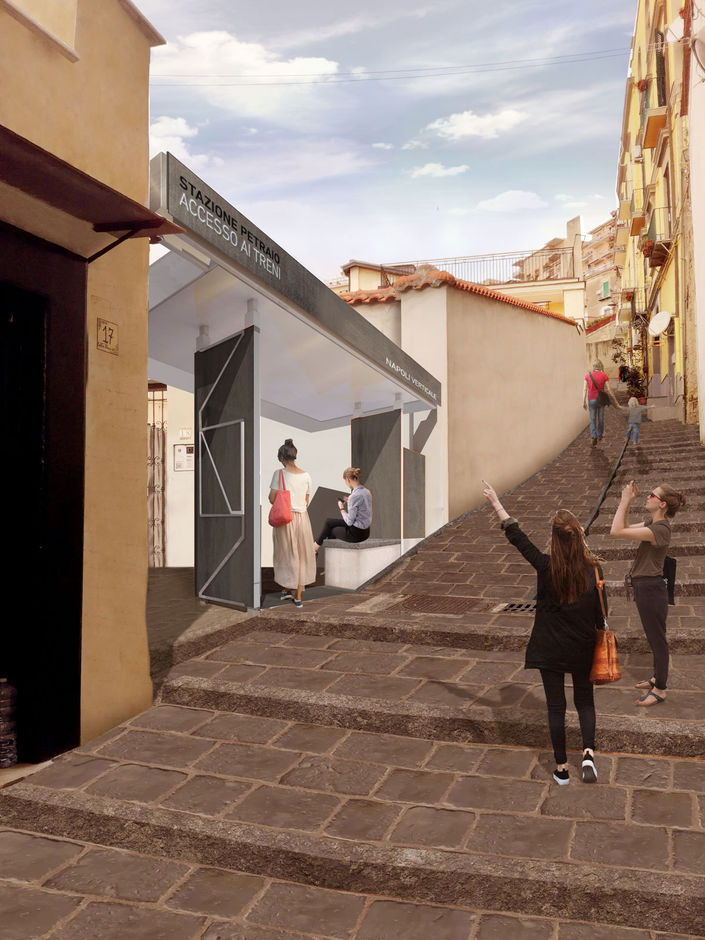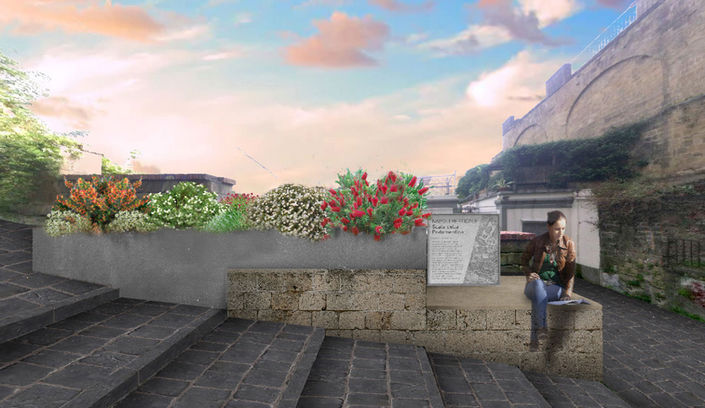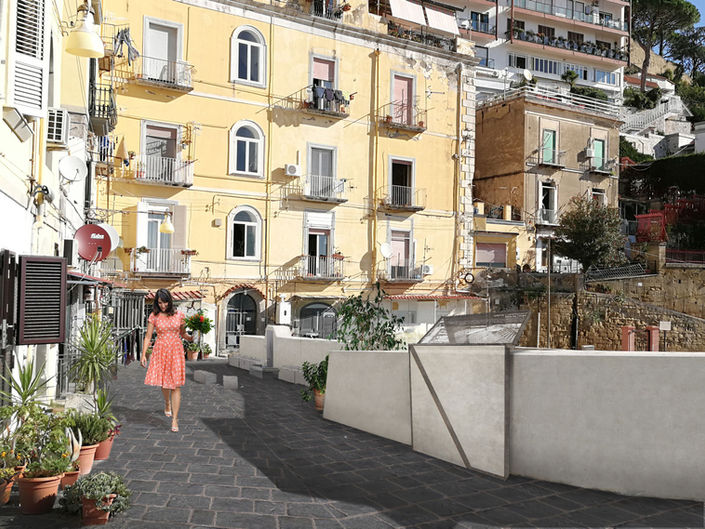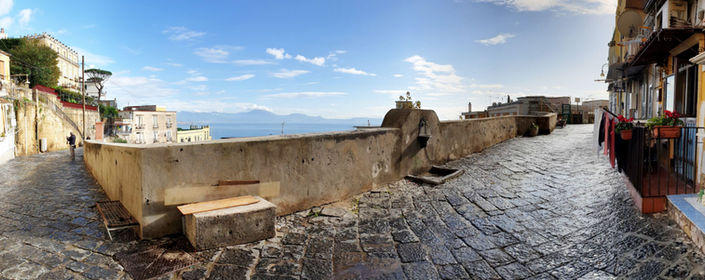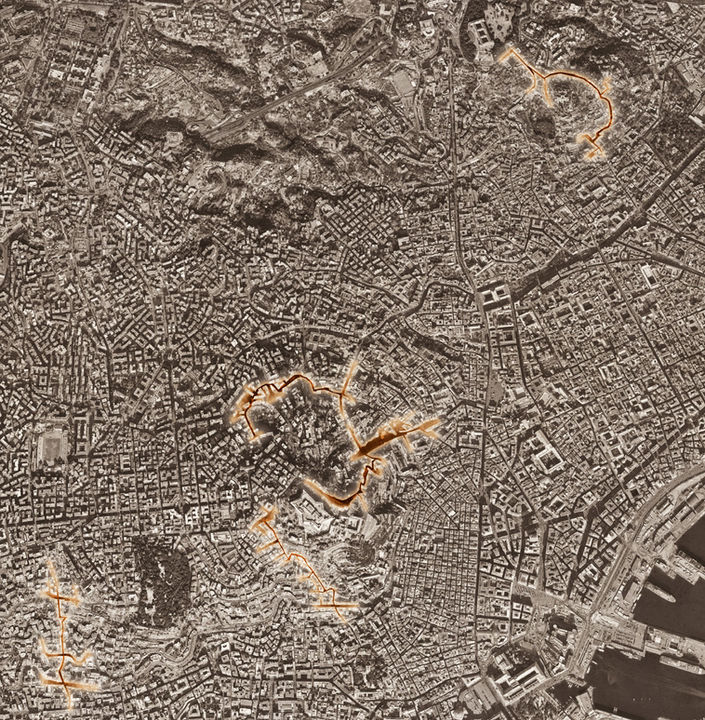top of page

Municipality of Naples
CLIENT
2019 – In progress
YEAR
Final and executive project
WORK UNDERTAKEN
7,282,780€
PROJECT COST
SAB architettura ingegneria integrata S.r.l (project lead)
B5 Srl
Studio Ing. Alberto Capitanucci
CONTRACTORS
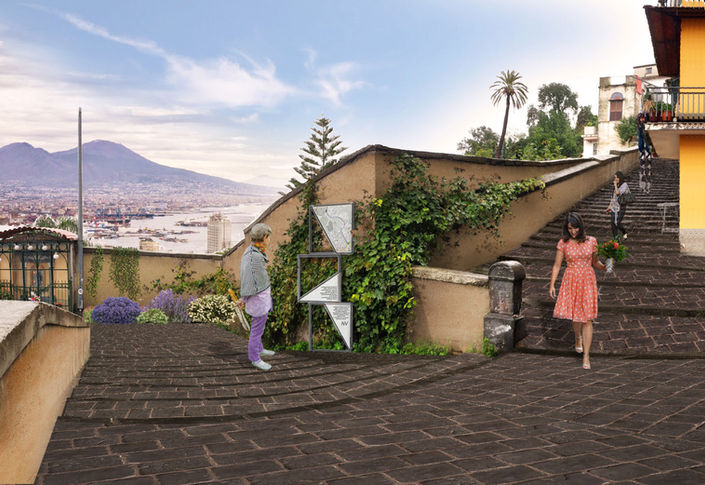
The interventions planned as part of the "Redevelopment of pedestrian paths between the hills and the sea" fall under Naples' City Pact – Strategic Infrastructure sector. They are conceived to address a renewed emphasis on interpreting urban spaces at a human scale, promoting tourism revitalisation through urban hiking initiatives. These efforts are bolstered by the active participation of the Municipal Administration, citizens' committees, FAI, Legambiente, and WWF. The project aims to extensively revitalise and enhance six of Naples' most evocative historical stairways. Once pivotal hubs for the city's expansion, they now languish in neglect despite being part of a pedestrian pathway system. These stairways not only provide vertical connectivity across the city but also hold significant historical and landscape value, supporting the existing infrastructure network. If we consider social interaction and community as integral to culture, then the streets have historically been the very spaces where such interactions thrived. The urban environment must foster social interactions; obstacles, stairs, steps, and descents should once again facilitate movement from hilltops to the historic centre, encouraging pauses for thought, listening, and experiencing the city. This approach promotes a new lifestyle that encourages a mindful engagement with the city rather than hurriedly passing through it. The city of Naples boasts a significant heritage of stairways that narrate its history, culture, and landscape, and are also an immediately available resource for enhancing sustainable urban quality. The specific stairways included in the intervention are: the monumental staircase of Montesanto, the Pedamentina di San Martino, the Calata di San Francesco, the Salita Caciottoli, the Giardini del Petraio, and the Salita Moiarello. These pedestrian paths consist of stairs, ramps, and terraces, all interconnected to the coastal artery along Corso Vittorio Emanuele, except for Salita Moiarello. Six routes were chosen based on their features, location, and potential for use, forming the foundation for establishing a "green network" linking municipal parks and connections along regular roads. This initiative also considers opportunities to enhance environmental and monumental assets. Through this enhancement, the collection of stairways and bases will transform into a significant and comprehensive cultural asset; a "relational heritage" system comprising elements from diverse interventions in terms of location, historical periods and architectural forms. Through the design of specialised smart devices and informative graphics strategically positioned along the routes, these areas will be recognised for their renewed significance. The overarching concept, developed in collaboration with the client and starting from the project logo, aims to visually and architecturally interpret the fragmented morphology of the Neapolitan territory, with its segmented lines and panoramic views.
Museumisation and rehabilitation of the “Naples Vertical City” routes
bottom of page
